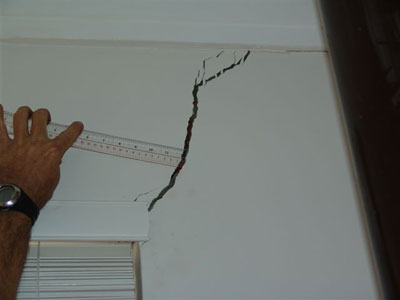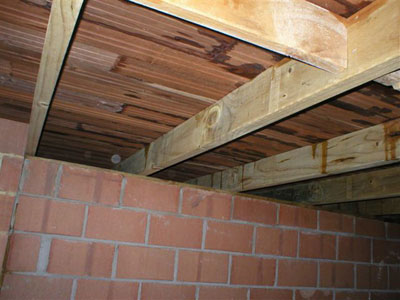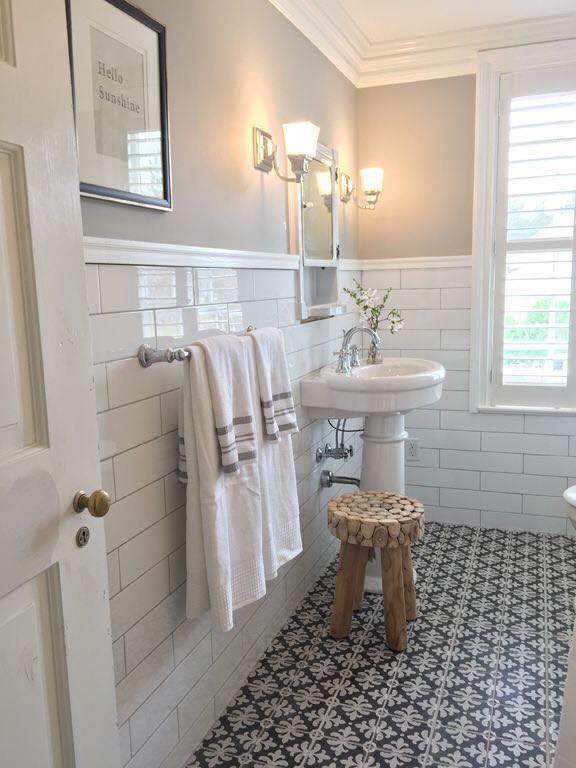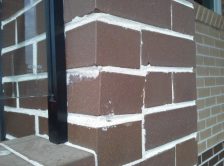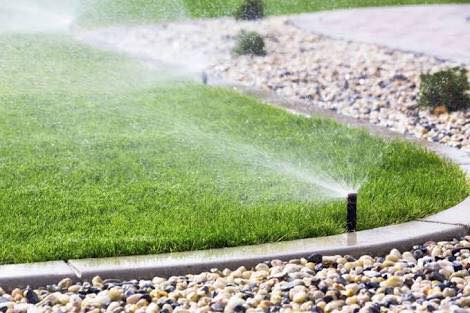
Do It Yourself Inspection Checklist
It’s hard to imagine a car buyer going ahead without first checking the motor or at least having a test drive. A house buyer outlaying eight or ten times as much often does just that!
Houspect Building Inspections was set up to help the home buyer make right purchase decisions by providing important information on defects and repair costs.
However, if you are a ‘do it yourself’ purchaser, here’s a pre-purchase building inspection checklist you might find handy.
If you see any of these items below, you will need the help of a professional to investigate the significances of the fault – call Houspect.
Before embarking on your inspection, you'll need to take a ladder, a long shank screwdriver, a good torch and a power point tester (available from hardware and electrical stores).
THE INSPECTION – WHAT TO LOOK FOR:
The Garden
- Check condition of fences and gates. Examine the base of gate posts and fence posts.
- Look for large trees close to the house. These could cause structural subsidence, particularly in brick or veneer homes.
- It is also worthwhile noting the location of poisonous trees and shrubs (i.e. Rhus or Oleanders).
- Check structural conditions and water tightness of rooms and walls of garages and sheds.
- Look for fire hazards, loose or broken power points, badly wired electrical fittings.
- Carefully inspect walls to ensure that they are straight. In timber houses, sagging weatherboards could mean timber stumps have rotted, or concrete stumps or brick piers have subsided.
- Check for rotten weatherboards, windows, doors, verandah posts.
- Thoroughly check the condition of the mortar between bricks.
- Where houses are brick clad to the ground, make sure there are plenty of sub-floor ventilators beneath floors.
- Look for buckled, badly fitted or water stained eaves.
- Lean your ladder against the guttering and look for a wavy roof line.
- Look for broken roof tiles, loose ridge and valley tiles.
- Check that corrugated iron sheets are in good condition and well nailed down.
- Ensure that valley and eaves guttering are free from holes and rust. Even small holes can create large leaks.
- Make sure flues and chimneys are structurally safe and the flashings around them are secure.
- Look under the floor for props or bricks holding up the floor instead of stumps, piers or dwarf walls
- With timber stumps, look for stumps with the heaviest water stain.
- Inspect timber framing and floors generally for rot, mould and evidence of borers.
- Check to see that the earth is not excessively wet.
- Look carefully for termite ‘shelter tubes’.
- If you are in any way unsure about borers or termites, the house should be checked by an expert.
- Look for sagging roof framing, cracked or broken tiles, rusty iron roofing and leaking ridges or valleys.
- Check for shoddy or damaged electrical wiring. Do not touch!
- A pungent odour or rat-like droppings could indicate the presence of vermin.
- Note whether or not the ceiling has been insulated.
- Although the underside of the concrete floors cannot be inspected check if there is any exposed perimeter to ensure that the plastic waterproofing membrane is not exposed.
- These checks should be carried out in each room of the house.
- At regular intervals, jump lightly on the floor to detect any rotten floorboards, borer infestation or looseness in the floor framing.
- Check to see if the floors are level, or there are gaps between floor and skirting. If stumps or piers are sinking, floors will always fall away from fireplaces or brick walls.
- Look for signs of dampness, such as lifting or buckling floor tiles and rotten carpet.
- Ducted heated systems are millimeters wide, they could indicate a significant structural problem.
- Check that walls are straight and true.
- Look for cracks and general movement and be particularly wary of freshly painted or wallpapered areas.
- Carefully inspect brick walls for dampness.
- Tap solid brick walls for a hollow sound or a change in tone.
- Look for cracks beside chimneys and look for doorways and windows that aren’t square, or are jamming.
- Lightly tap walls and tiled surfaces with the handle of your screwdriver.
- Check that ceilings are straight and true, and look for cracks or signs of movement at the cornices.
- Look for water stains/mould growth which could indicate excessive condensation or roof leaks.
- Make sure windows can be opened and check for broken window panes.
- Check for excessive condensation and mould growth on windows and walls.
- Check that light switches and power points work.
- Test power points with the tester.
- Wiring in many older homes is quite sound, provided that it is left intact.
- If you are at all in doubt about the condition of the electrical system, have it checked by an expert.
- Check plumbing fittings for cracks or leaks.
- Test water pressure in hot and cold taps.
- Partially fill bath or laundry tubs and observe whether or not the water drains away properly.
- Look for damp ground in the vicinity of the drains.
- Check for dampness and soft soil where down pipes meet the ground.
- Examine the house for appropriate room layout, orientation to the sun, views, relation to neighbours, traffic noise, and if not optimal, whether the house can be improved at an affordable cost.
Renovations and Extensions
If the house has recently been renovated, or if extensions have been carried out, check with the local Council to ensure that a building permit was obtained. Illegal alterations could become your responsibility, particularly if they contravene the building regulations.
If you are buying with a view to doing extensions, check Council requirements for set-back distances, maximum site coverage and restrictions on types of construction. You may need professional advice.
